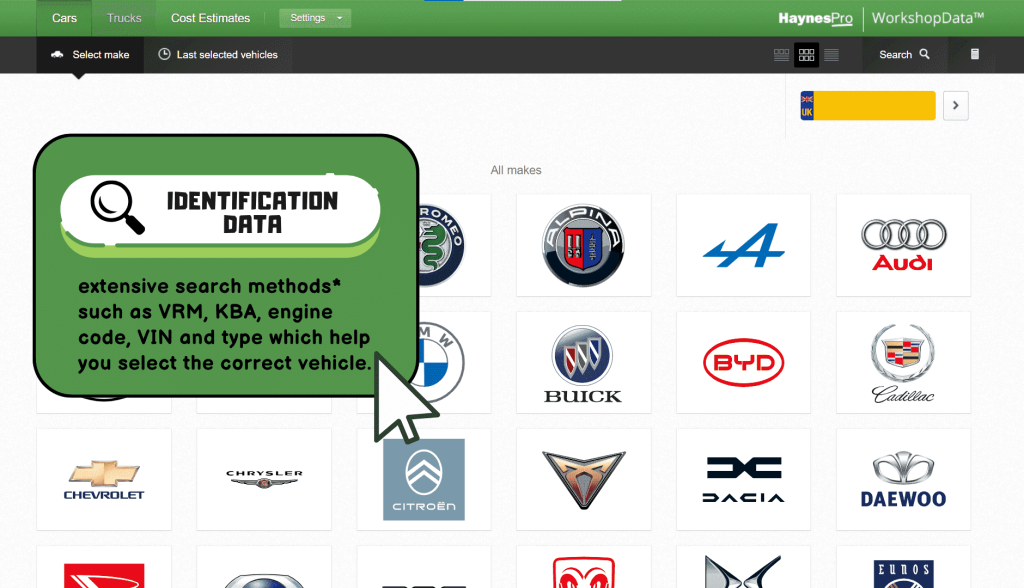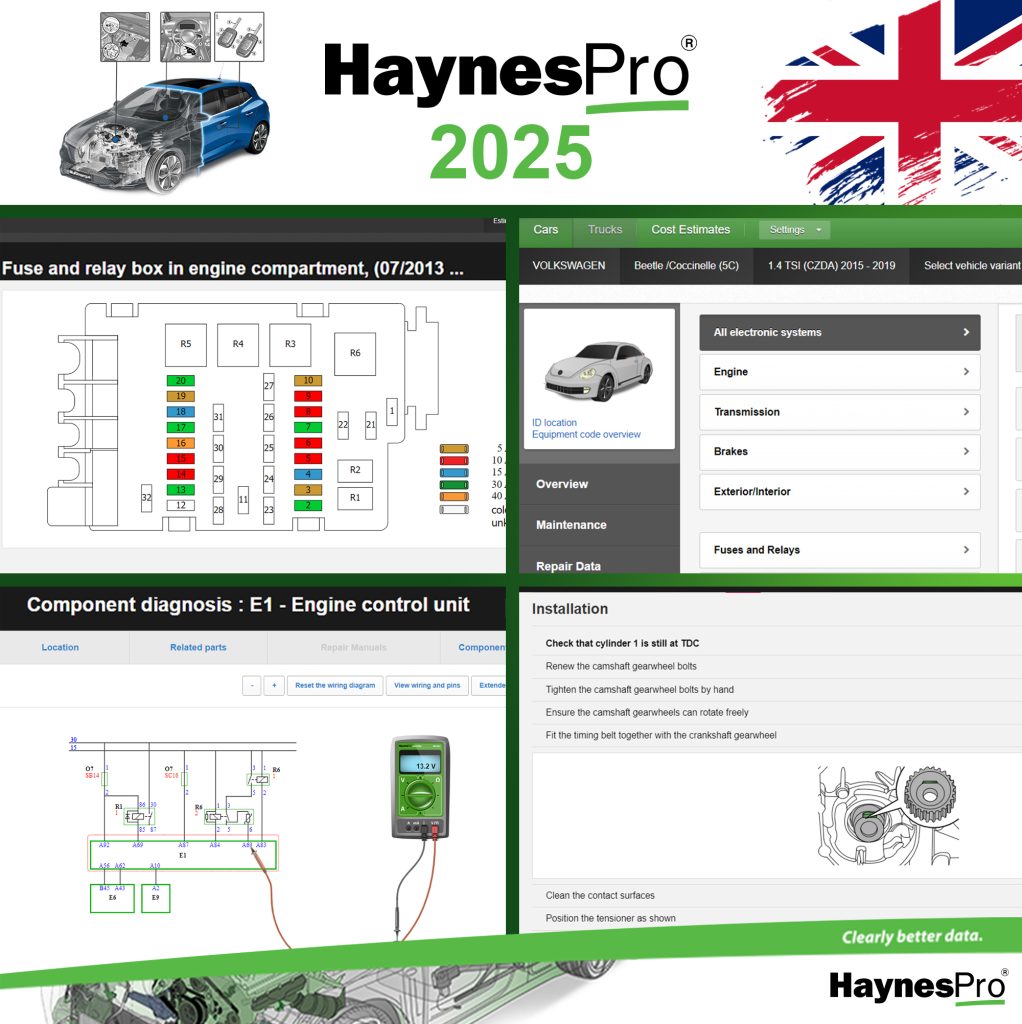Imagine a world where your car makes intelligent decisions—reacting faster than you to emergencies, optimizing routes in real-time, and enhancing your overall driving experience. This vision is rapidly becoming a reality, driven by the remarkable advancements in Artificial Intelligence (AI). According to a study by McKinsey & Company, the global market for AI in automotive applications is projected to soar to a staggering $462 billion by 2030, highlighting the immense potential of this technology to reshape how we perceive and interact with vehicles.
The emergence of AI in the automotive sector
The automotive industry is undergoing a paradigm shift powered by AI technologies, which are transforming everything from design and manufacturing to operational efficiency and user experience. This revolution can be attributed to several key factors:
Enhanced computational power
Recent advancements in computing hardware have led to the development of powerful processors and graphics units. These technologies enable the execution of complex algorithms that underlie AI applications in vehicles. With the ability to process vast amounts of data in real-time, cars can now make informed decisions that improve safety and performance.
Data explosion
Modern vehicles are equipped with an array of sensors that generate an unprecedented volume of data. This data encompasses everything from driver behavior and environmental conditions to real-time traffic information. AI algorithms can analyze this information, allowing vehicles to learn from their surroundings and make adaptive decisions. As a result, cars become smarter over time, continually refining their operations based on accumulated knowledge.
Advancements in algorithms
Machine learning and computer vision technologies have progressed significantly, enabling AI systems to handle the complexities of real-world driving scenarios. Algorithms can now recognize objects, predict movements, and make decisions based on multifaceted inputs, improving the overall reliability and efficiency of automated systems.
Together, these factors signal the dawn of a new era of intelligent vehicles, where AI plays a central role in enhancing the automotive experience.
AI’s impact on automotive safety, efficiency, and personalization
Enhanced safety features and driver assistance systems (ADAS)
AI significantly enhances vehicle safety through the development of advanced driver-assistance systems (ADAS). These systems utilize a combination of sensors, cameras, and algorithms to facilitate features like automatic emergency braking (AEB), lane departure warnings (LDW), and adaptive cruise control (ACC). For instance:
- Automatic Emergency Braking (AEB): This feature uses real-time sensor data to detect potential collisions. If a threat is identified, the system can autonomously apply the brakes to prevent or mitigate the severity of an accident.
- Lane Departure Warning (LDW): Utilizing cameras to monitor lane markings, this system alerts drivers if they unintentionally drift out of their lane, helping to prevent accidents caused by distractions or drowsiness.
- Adaptive Cruise Control (ACC): This system adjusts the vehicle’s speed based on the distance to the car in front, maintaining a safe following distance while allowing for a smoother driving experience.
By analyzing data in real-time, AI enables vehicles to respond more quickly than human drivers, significantly reducing accident rates and enhancing overall road safety.
Optimized vehicle performance and efficiency
AI is also playing a pivotal role in improving vehicle performance and fuel efficiency. Through advanced analytics, AI systems can monitor various aspects of a vehicle’s operation, such as engine performance, tire pressure, and driving patterns. This capability enables:
- Fuel efficiency optimization: AI algorithms can analyze driving behaviors and recommend adjustments that maximize fuel economy. For instance, by providing real-time feedback on optimal acceleration and braking patterns, drivers can learn how to improve their fuel efficiency.
- Performance tuning: AI can fine-tune vehicle dynamics, adjusting parameters such as suspension stiffness and throttle response based on driving conditions. This results in a more responsive and enjoyable driving experience, catering to individual driver preferences.
The revolution of autonomous vehicles
One of the most groundbreaking applications of AI in the automotive sector is the emergence of autonomous vehicles. These self-driving cars rely heavily on AI for several critical functions:
- Perception: Equipped with a suite of sensors, including cameras and LiDAR, autonomous vehicles can construct a detailed understanding of their environment. This sensory input allows them to detect obstacles, traffic signals, and pedestrians, ensuring safe navigation.
- Decision-making: AI algorithms interpret the data gathered from sensors, making real-time decisions about steering, acceleration, and braking. For example, if a pedestrian steps into the road, the AI can calculate stopping distances and execute emergency braking more rapidly than a human driver.
- Route planning: AI assists in plotting efficient routes by considering factors such as traffic conditions, road closures, and weather impacts. This capability not only saves time but also contributes to a more environmentally friendly driving experience by optimizing fuel consumption.
Although fully autonomous vehicles are still under development, the continuous improvements in AI technology are setting the stage for a future where self-driving cars are a common sight on our roads.
Personalized driving experience
Beyond safety and performance, AI is revolutionizing the user experience by making vehicles more personalized and intuitive. Imagine a car that learns your preferences and adapts accordingly. Key features include:
- Comfort control: AI can automatically adjust climate settings, seat positions, and even ambient lighting based on your previous choices, creating a tailored environment every time you enter the vehicle.
- Infotainment integration: AI-powered virtual assistants can anticipate your entertainment needs, offering music playlists, navigation suggestions, or hands-free communication options based on your preferences and driving habits.
- Driver monitoring: Advanced systems can assess driver alertness by analyzing facial expressions and eye movements. If signs of drowsiness or distraction are detected, the vehicle can provide alerts or even suggest a break.
Streamlined manufacturing and operations
AI’s influence extends beyond the vehicle itself, impacting manufacturing and operational processes within the automotive industry. This includes:
- Production line efficiency: AI automates numerous tasks in manufacturing plants, ensuring consistent quality and optimizing production workflows. Predictive analytics can forecast equipment failures, allowing for timely maintenance and minimizing downtime.
- Supply chain optimization: AI enhances supply chain management by analyzing data trends and optimizing inventory levels. This ensures that manufacturers can meet demand without overproducing, thus reducing waste and costs.
AI in action: Real-world applications
Leading automotive brands are already implementing AI technologies to improve safety, efficiency, and the user experience. Here are some notable examples:
- Tesla: Tesla’s Autopilot and Full Self-Driving (FSD) features leverage a sophisticated neural network that processes data from an array of sensors, enabling advanced features such as lane centering, adaptive cruise control, and automatic lane changes. This technology is continuously updated via over-the-air software updates, ensuring vehicles remain at the forefront of innovation.
- BMW: BMW’s Personal Co-Pilot system incorporates AI to enhance safety and convenience. Features like adaptive cruise control with stop-and-go functionality, combined with their Parking Assistant Plus, allow vehicles to navigate congested traffic and park autonomously, easing the driver’s workload.
- General Motors (GM): GM’s Super Cruise system represents a significant advancement in hands-free driving technology. By utilizing LiDAR, high-precision GPS, and multiple cameras, Super Cruise enables a safe, hands-free experience on designated highways while ensuring constant monitoring of the vehicle’s surroundings.
- Mercedes-Benz: The Drive Pilot system from Mercedes-Benz utilizes a combination of sensors and AI algorithms for conditionally automated driving on specific motorway sections. It constantly assesses environmental conditions and maintains readiness for driver intervention if necessary.
- Audi: Audi’s Traffic Light Assist employs AI to detect traffic signals and communicate information to the driver, such as the optimal stopping distance based on speed. This feature not only enhances safety but also improves the driving experience at intersections.
- Volvo: Volvo’s suite of safety features includes advanced pedestrian detection systems powered by AI. These systems use cameras and radar to identify potential collisions, automatically applying brakes when a collision is imminent.
Looking ahead: The future of AI in the automotive industry
As we look to the future, several groundbreaking innovations promise to redefine the automotive landscape:
The path to fully autonomous vehicles
Achieving complete autonomy remains a primary goal for the automotive industry. To realize this vision, advancements in key areas will be crucial:
- Sensor fusion: The integration of data from cameras, LiDAR, radar, and ultrasonic sensors will create a comprehensive 360-degree view of the vehicle’s environment, enhancing situational awareness and safety.
- Enhanced decision-making: As AI algorithms become more sophisticated, they will be able to handle increasingly complex driving scenarios, making real-time decisions that emulate human judgment.
- Advanced mapping and localization: High-definition mapping combined with AI will enable self-driving cars to navigate precisely while adapting to changing road conditions in real-time.
Despite the technical and regulatory challenges that lie ahead, AI is paving the way for a future where fully autonomous vehicles become a mainstream reality.
Hyper-personalization
AI will not only make vehicles smarter but also deeply personal. The future could see cars that anticipate individual preferences and adapt seamlessly to each driver’s needs:
- Predictive preferences: AI can learn and predict cabin temperature preferences, favorite music genres, and optimal navigation routes based on past behavior.
- Biometric integration: With advancements in biometric technology, vehicles could adjust seat settings and displays based on facial recognition or voice identification, creating a truly personalized driving experience.
- Adaptive safety features: AI could enhance safety by monitoring driver behavior and alertness levels, adjusting safety parameters as needed to ensure optimal conditions for driving.
Predictive maintenance
The future of vehicle maintenance will likely be transformed by AI-powered predictive capabilities. Imagine a vehicle that continuously monitors its own health, alerting drivers to potential issues before they become significant problems:
- Real-time diagnostics: AI systems will analyze data from various vehicle components to detect abnormalities, enabling proactive repairs and minimizing the risk of breakdowns.
- Maintenance alerts: Vehicles will provide timely reminders for scheduled maintenance based on actual usage patterns and performance metrics, ensuring optimal performance and longevity.
Vehicle-to-Everything (V2X) communication
Imagine a world where vehicles communicate with each other and their environments. V2X communication, driven by AI, will enhance road safety and optimize traffic flow:
- Traffic management: AI will enable vehicles to share real-time information about road conditions, accidents, and traffic signals, allowing for coordinated responses that minimize congestion.
- Emergency response: In the event of an accident, vehicles equipped with V2X technology can notify emergency services immediately, facilitating quicker response times and potentially saving lives.
AI-powered cybersecurity
As vehicles become increasingly connected, cybersecurity will be critical. AI will play a pivotal role in safeguarding vehicles from cyber threats:
- Anomaly detection: AI systems can monitor vehicle networks for unusual behavior, identifying potential cybersecurity threats before they can cause damage.
- Automated updates: AI will enable secure and seamless software updates, ensuring that vehicles are equipped with the latest security measures without requiring driver intervention.
A new era of intelligent mobility
The dream of intelligent vehicles is swiftly transitioning from fantasy to reality, largely due to the transformative power of AI. As the automotive industry navigates this significant evolution, vehicles are no longer mere machines but intelligent companions that enhance our daily lives in multifaceted ways.
This transformation signifies not just technological advancement but a fundamental rethinking of mobility itself. As we prepare for this exciting future, we can look forward to an automotive landscape that prioritizes safety, efficiency, and personalization. The journey into intelligent transportation has only just begun, and the road ahead promises to be both fascinating and full of potential.
Embrace the future of automotive technology!
Stay ahead in the rapidly evolving automotive industry with HaynesPro‘s innovative solutions. Sign up today for a 7-day free trial and gain exclusive access to our comprehensive platform, featuring an extensive database of technical information, repair procedures, and diagnostic tools tailored for automotive professionals. Enhance your workflow and discover how HaynesPro can elevate your business.
Don’t miss out on this opportunity—click here to start your free trial now!
Sources :
https://markovate.com/blog/ai-in-automotive
https://litslink.com/blog/ai-in-the-automotive-industry
https://www.rematec.com/news/process-and-technology/ai-in-the-automotive-field








